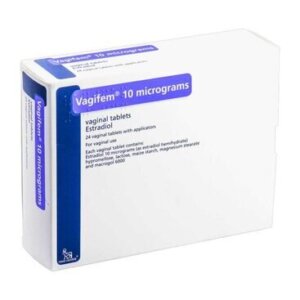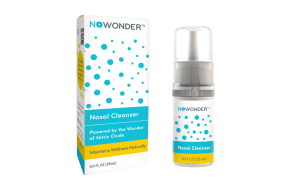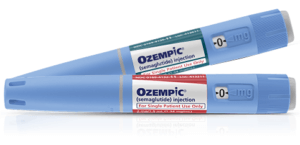 In the the mid-20th century, scientific advancements identified viruses, particularly rhinoviruses, as the culprits behind the common cold, the most prevalent form of infection worldwide. Tremendous effort was put into finding a way to beat the bug, and for a while, there was great optimism that we would win the war, in the same way that antibiotics were beating infections caused by bacteria. It even got to the stage where people were experimenting with antibiotics to fight viral infections, simply because penicillin and its successors had been so successful in fighting diseases like TB, pneumonia, meningitis, scarlet fever, UTIs, and sexually transmitted diseases. Sadly, as we explained in another article, antibiotics are not effective against viruses for very basic reasons, and in fact, the use of antibiotics against viral infections has caused far more harm than people know.
In the the mid-20th century, scientific advancements identified viruses, particularly rhinoviruses, as the culprits behind the common cold, the most prevalent form of infection worldwide. Tremendous effort was put into finding a way to beat the bug, and for a while, there was great optimism that we would win the war, in the same way that antibiotics were beating infections caused by bacteria. It even got to the stage where people were experimenting with antibiotics to fight viral infections, simply because penicillin and its successors had been so successful in fighting diseases like TB, pneumonia, meningitis, scarlet fever, UTIs, and sexually transmitted diseases. Sadly, as we explained in another article, antibiotics are not effective against viruses for very basic reasons, and in fact, the use of antibiotics against viral infections has caused far more harm than people know.
Since antibiotics were shown to be ineffective against viral infections, there has been a concerted effort to find ways to either prevent the virus from penetrating the body’s built-in defenses or to inhibit its spread once it bypasses the natural barriers.
Keep the virus out!
Some things were learned from the fight against bacterial infections in the earlier years before antibiotics took over. Viruses don’t simply grow on their own – they are picked up from contaminated external sources. Some basic steps like keeping surfaces clean by washing with disinfectants, wearing masks, avoiding touching people who have already contracted an infection (or things they have touched), and other such simple hygiene measures can reduce the chance of infection. However, it’s impossible in a busy world, where we interact with multiple people every minute, to create an impenetrable bubble around ourselves. Eventually, it becomes inevitable that some viruses will get into our bodies.
By far, the most common carrier of the cold virus is the air we breathe in, which can be laden with millions of them coming from air breathed out by infected people or, worse still, from watery droplets that are ejected when an infected person sneezes!
Beat the virus before it settles 
Viruses try to find friendly surfaces where they can penetrate cell walls and begin to replicate. The next section will discuss how, once that happens, the battle to defeat the virus and stop it from spreading becomes much harder. So, it makes great sense to make the first point of entry where the viruses have not yet been able to break into cells as hostile as possible without actually causing harm to the underlying tissues.
Two simple and non-toxic chemicals have been found to do that job very effectively:
- Iodine is a well-known and widely used disinfectant that has proven antibacterial and antiviral properties. Nasodine®nasal spray delivers a measured dose of povidone-iodine, which releases pure iodine onto the inner surfaces of the nose and upper nasal cavities. Any viruses that land on these surfaces will be broken down by the action of the iodine, which inactivates viruses and bacteria on contact. Laboratory studies show that even at the low concentration (0.5% PVP-I) in Nasodine, it can neutralize viruses like SARS-CoV-2 within seconds. Essentially, iodine damages the virus’s outer proteins and genetic material, rendering it non-infectious. This action is not specific to one virus. PVP-I has been shown to kill a wide range of pathogens (various viruses, bacteria, and fungi) on skin and mucous membranes.
- Nitric oxide (NO – not to be confused with nitrous oxide – laughing gas) is a very common chemical compound that has a role in many normal metabolic processes. The body’s own immune cells produce NO to kill invading pathogens, and the nasal sinuses in humans naturally generate low levels of nitric oxide as a defense against invading bodies. NOWONDER™ essentially boosts that natural defense by releasing an extra pulse of NO in the nasal passages. In simple terms, nitric oxide disables pathogens by several mechanisms. It can damage viral proteins and genomes, and it disrupts the membranes of bacteria. It’s a broad-spectrum antimicrobial, meaning it can inactivate many kinds of viruses (both RNA and DNA viruses) and bacteria on contact.
Nasodine® and NOWONDER™ are not competing products. They have completely different modes of action and offer their own benefits and rewards. Choosing which one best suits your own needs might come down to personal preference and specific circumstances:
- If someone has a thyroid condition or iodine allergy, NOWONDER™ is the clear choice (since PVP-I would be contraindicated).
- If someone wants the most evidence-backed option, NOWONDER™ has more direct clinical support.
- If cost or availability is a factor, Nasodine® is marginally cheaper, but the two come very close in terms of cost-per dose.
- Someone inclined to adopt a belt-and-suspenders approach could actually use both Nasodine® nasal spray and NOWONDER™ at different times.
In summary, both Nasodine®nasal cleanser and NOWONDER™ nitric oxide spray serve a similar purpose – to sanitize the nasal cavity and reduce one’s exposure to infectious pathogens.
Kill the virus

Frequently Asked Questions About Viral Infections
What’s special about the common cold?
There’s no single infectious vector that causes the cold; rather, there’s a very wide range of different viruses that can all cause the symptoms that we identify as a cold. Although about 75% of cases come from the group of human rhinoviruses (HRVs), there’s plenty of variety inside that group, and the remaining 25% contract colds from different families. All in all, scientists currently believe there are about 200 types of viruses that can cause the common cold.
To make matters worse, the cold viruses evolve and change rapidly. Other common viral infections like human immunodeficiency virus (HIV) that causes AIDS are relatively stable and in each case, specific antiviral treatments are available that suppress or destroy the virus responsible and thereby treat the symptoms of the disease. Examples are Ziagen and Trizivir, which are nucleoside reverse transcriptase inhibitors (NRTIs), Stocrin, a non-nucleoside reverse transcriptase inhibitors (NNRTIs), and Reyataz, a protease inhibitor (PI).
Herpes simplex virus (HSV) causes cold sores, and simple antivirals like Zovirax or Valtrex can clear the symptoms quite quickly.
The common cold is different from these diseases, because it can be the result of an infection by any one of at least 200 different microorganisms. It is also evolving all the time, which means people cannot build up lasting immunity. This is also why vaccines like the ones against influenza (a close cousin to the common cold) are only partially effective, and have to be re-engineered every year to have any degree of effectiveness against the evolved forms of the virus.
How does the cold virus work?
The common cold virus works by invading the cells in the nose and throat, multiplying rapidly, triggering the immune system, and causing the uncomfortable symptoms.
The viruses typically enter the body primarily through your nose, mouth, or eyes. Transmission happens through airborne droplets (like when someone coughs or sneezes near you), or when you touch contaminated surfaces and then touch your face.
Once inside, the virus seeks out specific cells lining the nasal passages and throat, called epithelial cells. Rhinoviruses are particularly effective at attaching to these cells. The virus has a special protein “key” that fits perfectly into specific receptors (“locks”) on the surface of the nasal cells. Once the virus attaches, it can penetrate the cell and start replicating by hijacking the cell’s natural processes. During this hijacking, the cells stop working normally and start replicating millions of new viruses rapidly. This replication damages the cell, leading to inflammation and irritation in the nasal passages and throat.
The newly created viruses burst out of the infected cells, destroying them in the process. Each of these new viruses can infect additional cells nearby, rapidly expanding the infection area. This rapid spread is why the symptoms of viral infection escalate so quickly.
The body’s immune system reacts to the invasion, dispatching white blood cells and releasing chemicals known as cytokines to help fight the virus. Although cytokines are protective, they cause inflammation and increase mucus production, making you feel miserable. Interestingly, it’s mostly the body’s own reaction, not the virus itself, that causes symptoms like congestion, sneezing, coughing, and sore throat. Excess mucus production attempts to trap and flush out the viruses and causes the typical runny nose. Swelling in nasal tissues due to increased blood flow and inflammation results in nasal congestion. Sneezing and coughing are reflexes meant to forcibly expel viruses and infected mucus out of the respiratory tract.
Typically, symptoms of a cold peak within 2–4 days of infection, as the immune system’s response is at its strongest. Eventually, the immune system’s specialized white blood cells and antibodies neutralize the virus, reducing the infection’s spread. As the infection subsides, the damaged cells repair themselves, inflammation decreases, and symptoms fade away. Usually, the entire process lasts about 7–10 days. After recovery, the immune system has created antibodies against that specific strain of virus, providing temporary protection. However, because there are over 200 virus strains, and because viruses evolve quickly. people can still easily catch another cold later in the same year.
Why is there no cure for viral infections?
Antibiotics don’t work against cold viruses, because they target whole cells like bacteria, not viruses, which are simple strands of RNA. Additionally, developing vaccines or cures is challenging because:
- Cold viruses constantly mutate.
- Hundreds of strains exist, making broad immunity difficult.
- Even if a cure or vaccine could be developed, by the time it could be approved and reach the market, the target viruses would have changed substantially and the effectiveness would be minimal. Pharmaceutical companies can’t justify the enormous up-front development costs against such a risky project’s possible limited revenue.














